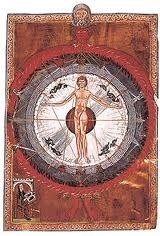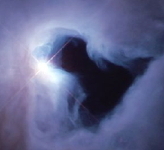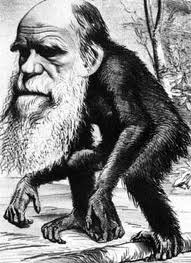Sue Lange's Blog, page 15
December 27, 2011
Weird Science Day 27: The Return of the Condor
 Remember the California Condor? Twenty-five years or so ago there was, like, 12 left. That's an exaggeration; there were 22. Remember the grim documentary, probably from National Geographic, depicting the bird's dire situation? Ecologists were wringing their hands over whether or not they should bring the entire population in to captivity where they'd be safer. Maybe they could keep condor chicks safe from disease and predators. They figured as the condor numbers grew, the species could be reintroduced to the wild. The romantic Born Free idea.
Remember the California Condor? Twenty-five years or so ago there was, like, 12 left. That's an exaggeration; there were 22. Remember the grim documentary, probably from National Geographic, depicting the bird's dire situation? Ecologists were wringing their hands over whether or not they should bring the entire population in to captivity where they'd be safer. Maybe they could keep condor chicks safe from disease and predators. They figured as the condor numbers grew, the species could be reintroduced to the wild. The romantic Born Free idea.
I remember thinking, right, like that's going to work. I couldn't believe that it would be healthier for a wild animal to live in a cage. I couldn't imagine humans would not botch it up. Introduce some horrible new disease and wipe out the entire population in the course of season. Or maybe the project would run out of money and the poor birds would be dispensed to various zoos across the country. A breeding pair to Toledo, a solitary old couple to the National Zoo in D.C. I held out no hopes for this lost bird.
I am overjoyed to say I was way wrong.
The biologists have done well. The California condor population is not yet thriving but it is increasing. According to the National Park Service, there are 394 birds as of October 31 and most of them–205 of them–are living out in the wild. Some of them are even being born free!
My throat gets all lumpy when I think of it. Condors produce one egg every two years. And that egg is not always fertile. I can't believe the success the condor program has had so far when faced with such odds.
Condors are majestic birds; the adults have a wingspan of over 9 feet. They live up to 60 years and mate for life. Although the birds once numbered in the thousands, their numbers in recent times dwindled, mostly due to habitat loss and use of lead shot and DDT. Since the birds are scavengers, they are at the very top of the food chain. Whatever is found in the bodies of their prey will wind up in theirs. And as lead and DDT accumulated in the environments, so too did it accumulate in the condors' prey and then, of course, in the condors themselves.
Fortunately DDT was eventually banned. Unfortunately lead is still a problem. According to the Hunting With Non-Lead Ammunition website, "Once lead bullet fragments are taken into the digestive system, the lead is dissolved by the very acidic conditions found in bird and mammal stomachs. This dissolved lead is absorbed into the bloodstream and then into the tissues and bones. Once present, the lead destroys the myelin sheath that insulated the nerve fiber bundles. This disruption causes a number of problems, including tremors, convulsions, lack of coordination, paralysis of the digestive system, and eventually either kills the animal outright or makes it too weak to avoid predators."
Lead shot is not just a problem for condors alone. Other birds, such as bald eagles, as well as animals such as humans can be poisoned by it. In my mind, the incentive to switch to steel and copper is high. Believe it or not hunting organizations, such as Ducks Unlimited, are at the forefront of conservation and as such, I'm confident that this no-lead thing will get sorted out by the hunters themselves.
Of course there are always the unbelievers, those that don't buy into the lead/condor death connection. In the interest of fairness, here's a vitriolic argument from Guns Magazine. Mr. Bodinson brings up good points and he may be right, but there is no rebuttal published alongside this article. Did the magazine even contact the Peregrine Fund to answer Mr. Bodinson's questions? It's hard to accept his argument out of hand when there's so much at stake.
I'm sure lead shot is cheaper than steel or copper, otherwise there would be no argument at all. And I understand if someone is hunting as a means to supplement an inadequate income, but the world is no longer as simple as it once was. Humanity's impact on the environment is much bigger than it ever was when we were all living a little closer to the bone. If the lead in the environment is not coming from hunting operations, we need to find out where it is coming from. That should have been Mr. Bodinson's argument, rather than just petulantly folding his arms across his chest and insisting he wasn't buying it. What if he's wrong? The price is too high.
The way I see it, the biologists have done a miraculous job in bringing these condors back. They've got a long way to go, and yes, it costs tons of money, but as they are safeguarding the environment for the condors, they are safeguarding it for all the wild animals. And us. That goes a long way. And if it costs a lot of money, that's only because as humans we've done a lot of damage and now we have to pay for it.
Here's wishing the condor all the success of the new year and a happy return to the wild.








December 26, 2011
Weird Science Day 26: Is Special Relativity Wrong?
 The Natural Philosophy Alliance (NPA) doesn't like 20th Century science, specifically relativity (special and general), quantum physics, the big bang and other cosmological disciplines. The members of the NPA feel that modern physics is "in dire need of a thorough overhaul, and that a much more tolerant spirit than has recently been shown in these fields must be practiced in order to achieve the needed changes."
The Natural Philosophy Alliance (NPA) doesn't like 20th Century science, specifically relativity (special and general), quantum physics, the big bang and other cosmological disciplines. The members of the NPA feel that modern physics is "in dire need of a thorough overhaul, and that a much more tolerant spirit than has recently been shown in these fields must be practiced in order to achieve the needed changes."
The Alliance includes hundreds of members from all over, mostly older folks as far as I can tell. Which makes sense, budding physicists do well to stay away as their reputation will be tarnished if they are seen in the company of these anarchists. Unfairly I might add. Science is supposed to be open to question. Theories knocked about. But sadly NPA members' objections to current physics dogma are not allowed consideration.
Not only do the members not agree with established physics, they do not agree on what modern physics should be. They openly argue with each other at their conferences. Disagreement is encouraged. Take a look at the list of topics covered in this year's past NPA conference. You'll see things like:
Neo-Newtonian Theory
Failure of the Relativistic Hypercone
The Neutron: Modeled as a Fieldstructure
The True Direction of Gravitational Force
The Neutrino: Doomed from Inception
The members are considered by mainstream physicists as cranks, their ideas crackpot. They may very well be, but when you visit the site you get the feeling that these people have thought long and hard about modern physics, that they understand it, and find fault with it. Even if they are dead wrong, they are eloquent and that makes them hard to ignore in my opinion.
Are they dead wrong? Dunno. Would love to find out.
As a starting point, the group is concentrating its efforts in one area: special relativity. NPA founder, John E. Chappell, is particularly annoyed with special relativity. "I agree with most of my NPA colleagues that SR never was valid, never will be valid, and in fact cannot possibly be valid," he says. "There is no other issue on which the authoritativeness of modern physics can be more effectively challenged; and so I have urged my NPA allies to concentrate our efforts most intensely on criticizing and replacing SR."
Presumably what the Alliance is annoyed with is that physics seems to be defined by the mathematics, not by observation of reality. The same sort of thing I wrote about in regards to the Multiverse Theory. Einstein came up with special relativity so Maxwell's equations would work. The Alliance members feel we don't need to throw out Newton because of Maxwell. We don't need to have two physics, one for the macro world, one for the micro.
It's the sort of thing that always bugged me about Shroedinger's cat. Theoretically it's both dead and alive. But that has no meaning for us and is surely not the case. It has to be one or the other at any point in time. And once it's dead it can't be alive later. That's the nature of being "alive." But it's one of those things in modern physics that you have to accept on faith and go from there. Really what good is that? Because I can't conceive of it means there's a deficiency in me. Yes, true enough, but it also might mean there's a deficiency in the definition of reality. Making something up so it works with previous assumptions doesn't make it or the previous assumptions true. That puts it in the realm of mysticism. Only the truly faithful will understand, the rest of us don't count because we can't see.
I'll buy that, but that doesn't make it so. I think what the Alliance is trying to do is make modern physics come clean. Admit that there is no hard and fast proof for certain assumptions; that the proof modern physics relies on has a basis in faith.
I don't know if they're right, but I do know that these people's ideas are treated the same way believers of perpetual motion are treated. And I suspect they are a long way from that.
I firmly believe in the laws of thermodynamics, even if they were never proven. It's intuitive that perpetual motion machines will not work. I'm not as sure about the laws of special relativity, quantum mechanics, and Shroedinger's dang cat, but that's just me. The question I'm left with is: if the NPA is right and special relativity is wrong, what will be the consequences for the standard model of particle physics and other areas of modern thought? What gets thrown out the window? I'll be watching the skies for hints.
Thanks for reading.








December 25, 2011
Weird Science Day 25: The Science of Religion
 Hard to believe in these post-enlightenment, post-industrial, post-modern times, that 88% of the world's population believes in a supreme being. So I guess the world isn't being taken over by atheists after all.
Hard to believe in these post-enlightenment, post-industrial, post-modern times, that 88% of the world's population believes in a supreme being. So I guess the world isn't being taken over by atheists after all.
The question I have is, why, in these hip and enlightened times, are we still superstitious?
According to Time Magazine's Your Brain: A User's Guide, "having faith can improve your health…People who attend religious services do have a lower risk of dying in any given year than people who don't attend."
As an aside, it's not just belief in any old god that's important. The kind of god comes into play. "People who believe in a loving God fare better after a diagnosis of illness than people who believe in a punitive God."
Interesting.
So there's a link between faith and long life. What is it about religion that keeps you healthy?
Lots of theories come to mind, the most obvious being if you love God, then God loves you back. Kind of selfish on God's part, don't you think? How about: Smart people believe in God; smart people know how to take care of themselves.
That could be it, but I doubt it. I don't think IQ has anything to do with religiosity.
Personally I think the religion/health connection has to do with the social factor. People are happier if they are part of a social network. Religion often provides a nurturing social place (especially if your God is a loving God as opposed to a punitive God). And there's a clear link between depression and ill health. The happier you are, the healthier you are. You could do worse than hanging with your homeys at church.
There are other reasons why the religious are healthier. The December issue of Scientific American mentions that certain religions frown on smoking, drinking, taking recreational drugs, and engaging in risky sex. Not participating in those behaviors goes a long way in keeping you healthy. Religion promotes self-control which curbs self-destructive behaviors.
Finally, there's prayer. Specifically prayer healing the sick and dying. There have been tons of experiments designed to prove whether or not prayer works. These experiments seem to prove whatever the experimenter wants them to prove so I'm not sure they prove anything at all. However, I believe prayer can heal. I say this because I know the placebo effect heals as well. The human body can heal itself. All it takes is a method to tap into the inherent healing power of the body. Call it prayer, call it the placebo effect, whatever it takes, the body will heal itself. Even knowing that someone else is praying for you in your time of need will speed you on your recovery. It doesn't even have to be your own prayer for your own health.
So the reason for the popularity of religious belief seems obvious to me: it endows you with longer and healthier life. What's not to love?
Come all you faithful, joyful and triumphant.
Thanks for reading.
Sue Lange








December 24, 2011
Weird Science Day 24: Surgery's Avant Garde–Color Coded Tumors
 Gooitzen Van Dam at the University of Gonnigen makes his tumors glow.
Gooitzen Van Dam at the University of Gonnigen makes his tumors glow.
Don't tell me: the avant garde is at it again? They've come up with a ghoulish mashup between art and health?
No and no. We're talking about a technique that marks the periphery of a cancer mass so surgeons can tell where the tumor ends and normal tissue begins. Differentiating between the two is an iffy process at best. I imagine surgeons try to err on the side of caution and take more tissue than what they need to. Even then they're never sure and some cancer probably gets left behind. This new technique will color code the tumor cells for easy identification.
Not actually color code them, but make them fluoresce, light up brightly, shine in the night.
Here's how it works: A few hours before ovarian surgery, the patient is intravenously fed a solution containing fluorescent-marked folate, more specifically: Folate-Receptor-alpha-targeted fluoerescent agent.
The surface of ovarian cancer cells apparently over-express for folate. According to Merriam-Webster, genes over-express by producing too much of the gene's effect or product. So in the case of folate and ovarian cancer cells, I guess the genes in the cancer cells sweep up the excess folate in the system from the intravenous drip and deposit the folate products near the surface of the cancer cells. Since the folate molecules from the drip are tagged with a fluorescent dye, these cells glow with the oncological equivalent of an x-marks-the-spot sign.
If you're not too squeamish, watch the amazing video.
Here's hoping they find the folate equivalent for every type of cancer's over-expression.
Of course it's better to prevent cancer in the first place, but barring a miracle that produces a chemical-, x-ray-, cosmic background-, and free-radical-free existence, cancer's going to be around for some time to come. Bring on the avant garde.
Thanks for reading.
Check out Sue Lange's latest novel, Tritcheon Hash, "a wild good read."








December 23, 2011
Weird Science Day 23: The Brain of a Genius
 Far be it for me to come up with a definition of genius. As far as I'm concerned genius has as much to do with timing as it does with brain function. If your idea has traction, you'll be hailed as a genius, otherwise just a crank.
Far be it for me to come up with a definition of genius. As far as I'm concerned genius has as much to do with timing as it does with brain function. If your idea has traction, you'll be hailed as a genius, otherwise just a crank.
Wikipedia goes on and on about Hildegard of Bingen. And rightly so; she was a genius. She was an 11th Century, uneducated nun, yet her entry is longer than that for Blaise Pascal. Proof, right? I mean if she was alive today, I'm sure her Klout score would be around 95. She was important.
Hildegard of Bingen was first and foremost a visionary in the literal sense. She had visions. Beyond that, she was a writer, composer, scientist and much more.
What Wikipedia doesn't tell you, but the Internet History Sourcebook Project does, is that her genius, her visions stemmed from migraines.
I assume Wikipedia leaves that out because they don't want anything to detract from her reputation as a unique thinker, a blaser of trails. As if she herself was not the genius but her affliction. Or, maybe they don't want anything to interfere with her canonization, scheduled for late 2012. They want no one questioning the direct line from her genius to God. Even if that was questioned, in my opinion, the fact that her extreme devotion and work that went into glorification of God and the church ought to get her sainthood. She left behind 100 letters, 72 songs, 70 poems, and 9 books, all glorifying the Supreme One.
That's a lot of hay.
But what was her genius? Was her art inspired by migrainous visions?
For anything to be considered genius it needs to have two things. The first is obvious: it must be unique. That's harder than you think. David Klion says our culture has been frozen for the last twenty years. Even though more and more people find an outlet for creativity on line, we have less and less of it to show. We're just regurgitating our past ideas. New ones are hard to come by.
 Did Hildegard have a new idea? According to Wikipedia she was "creative in her interpretation of theology." That blows me away. This was a nun. How much sway do nuns have today, let alone back then? It's a miracle we even remember who she was. Women didn't have voices back then. She'd have to be a genius with ideas radical and truthful enough to get noticed.
Did Hildegard have a new idea? According to Wikipedia she was "creative in her interpretation of theology." That blows me away. This was a nun. How much sway do nuns have today, let alone back then? It's a miracle we even remember who she was. Women didn't have voices back then. She'd have to be a genius with ideas radical and truthful enough to get noticed.
Which brings me to my second requirement for genius: the ability to recognize and sell an idea. You can't just have one, you must realize its impressiveness and figure out how to convince others of its importance. Obviously Hildegard had that aspect of genius, that political talent.
At one point she was at odds with her local abbot, but they remained friends. And she was on speaking terms with higher ups, notably a couple of popes and Emperor Frederick I Barbarossa. She knew she had something to say and the ability to get it to the channels that would promote the work properly.
Do all geniuses have such brains? Do they all have dysfunction that leads to vision? Is there something in the average brain that precludes the ability to conjure something new? Something that is missing in the brain of a genius and therefore not in the way of visions?
 Whatever is different is no matter. It's the ability to recognize the unique, important, and beautiful that makes a genius.
Whatever is different is no matter. It's the ability to recognize the unique, important, and beautiful that makes a genius.
IMHO.
Thanks for reading.








December 22, 2011
Weird Science Day 22: The Generic Human Being
 Back in March, National Geographic created an image of the averagest human face. They came up with this ghostly image made out of 7,000 tiny human figures, each representing a million people. Check out the National Geographic site and zoom in to see the little people that make up the image.
Back in March, National Geographic created an image of the averagest human face. They came up with this ghostly image made out of 7,000 tiny human figures, each representing a million people. Check out the National Geographic site and zoom in to see the little people that make up the image.
I have no clue how they did it, what it means, or if it can be classified as science. It is, however, weird and that's why it's here.
So who is the generic human being? He speaks Mandarin, is Chinese, is Christian, works in the service industry, lives in a city, and can read.
And yes, the generic human is male. According to Wikianswers, there are 101.3 males for every 100 females in the world. Since we have to pick one, we'll go with the majority.
And if he looks at all like his picture, he's an unfocused individual.
Science fiction authors, take note, as the world globalizes further and we cross-breed like rabbits, we will all come to look like this man. Keep that in mind when describing your lead character. And for reality's sake, please, make him be a bellhop or something. None of this space invader stuff. Too unrealistic.
Thanks for reading.








December 21, 2011
Weird Science Day 21: Laser Fusion–Bring on the Future!
Remember "Eat beans, America needs the gas!" ? That was in the 70s. Nowadays we're way beyond what a little peptic flatulence can solve. We need something a little stronger, better, and more reliant.
Ever since the 50s there have been whispers amongst those who know about a secret in the stars. Nothing is said out loud; you can only hear the word when the wind is blowing right. Or it creeps into your dreams while you're sleeping. You turn a corner and you spot the elven footprints of a crazy physicist who insists he has the answer. You hear the answer as it blows in the wind: fussssion, fussssion, fussssion.
As Einstein is my witness, fusion power will work. And it will solve our problems.
"A fusion power plant would produce no greenhouse gas emissions, operate continuously to meet demand, and produce shorter-lived and less hazardous radioactive byproducts than current fission power plants. A fusion power plant would also present no danger of a meltdown." — National Ignition Facility
So what is fusion?
It's the opposite of fission. Fission harnesses the energy produced when a big ass atom is split. Fusion harnesses the energy when a teensy atom is fused with another teensy atom. Specifically isotopes of hydrogen, the very smallest, most basic of atoms. The isotopes in question are deuterium and tritium, one of each. They fuse to produce a little matter in the form of helium and a neutron plus a whole wad of energy.
As always, you can get the particulars at Wikipedia. By the way, in case you didn't realize it, Wikipedia is stumping for donations. They're trying to keep it ad-free. It's not too late to make a donation for next year's taxes, hint, hint.
So what are we waiting for? Well, in a nutshell, 120 million degrees Kelvin.
Are you thinking what I'm thinking? Right. It takes a big dog to weigh a ton. 120 million degrees is a sizable dog. What the hell are you going to use to hold your little deuteriums and tritiums? What could possibly take that heat?
The 120 million dollar question, of course. The answer: a plasma. I defined that for you in the last blog post, I'm not going to do it again, mostly because it doesn't matter for this post. Suffice it to say you need a plasma. What to hold the plasma is more important. You and the crazy physicist have two methods to do this: Magnetic confinement fusion, and Inertial confinement fusion. Confinement is the key to the problem. Specifically plasma confinement.
Most believers believe in magnetic confinement. Apparently early work into laser confinement was not promising. The energy required far exceeded that produced, so everybody pretty much thought it was a dead issue.
But there was that one crazy physicist who was just a little crazier than the rest and who never let the subject of laser confinement die.
The crazies are currently hosted by the Lawrence Livermore National Labs in California. They work in the National Ignition Facility. Sounds internally combustive doesn't it? National Ignition. Like half of us are going to turn the crank and the other half give it the gas at just the right moment and boom! energy everywhere for everyone.
More specifically, "The goal of the National Ignition Facility is to achieve fusion by compressing and heating a pea-sized capsule containing a mixture of deuterium and tritium with the energy of 192 powerful laser beams [Shouldn't that be "192 bone-chilling laser beams"?]. This process will cause the fusion fuel to ignite and burn, producing more energy than the energy in the laser pulse and creating a miniature star here on Earth…Ignition experiments at NIF will set the stage for one of the most exciting applications of inertial confinement fusion one could imagine—production of electricity in a fusion power plant."
That's the pea-sized capsule in today's image up there. Looks magical, doesn't it? All shiny and golden like that.
So where are they at in the process? They are making gains in fits and starts. In October New Scientist reported that the facility "set new records for neutron yield and laser energy." Sounds good. Progress continues. Experimentation continues. You can watch the drama at the NIF status page.
Meanwhile due to environmental pressure from global warming and economic pressure from rising costs of power, fusion power is on a 20 year plan for commercialization. They want fusion power online by the 2030s.
To achieve this, "Mike Dunne, managing director of Laser Fusion Energy at the NIF, says that to achieve its goal of commercialization, the NIF has already brought in the utilities industry and vendors, concurrent with experimentation at LIFE. This is in contrast to simply producing lab results with no real commercial plan down the road."
For your info, LIFE stands for Laser Ignition Fusion Energy project.
They tell us that our troubled energy future cannot be saved by alternative fuels alone. With the number of outsized vehicles running around the countryside and our disdain for sacrifice, I'd say that's probably a safe assumption. Considering this year's Fukushima mishap I don't think anyone is hot on increasing our fission dependence either. Fusion is not only in our future, it probably is our future.
Thanks for reading,
Sue Lange
Sue Lange's latest ebook, Tritcheon Hash, is full of lapses of logic and weird science. "It's a wild, good read." Get your copy from Amazon or read a couple of free chapters at the publisher's website.








December 20, 2011
Weird Science Day 20: Crowd Sourcing with DARPA–The Shredder Challenge
 The contest started on October 27 and ended on December 2, much to the surprise of Dan Kaufman, director of DARPA's Information Innovation Office. "Lots of experts were skeptical that a solution could be produced at all let alone within the short time frame," he said.
The contest started on October 27 and ended on December 2, much to the surprise of Dan Kaufman, director of DARPA's Information Innovation Office. "Lots of experts were skeptical that a solution could be produced at all let alone within the short time frame," he said.
According to the announcement on December 2, over 9000 contestants participated. Here's how the challenge went:
"Today's troops often confiscate the remnants of destroyed documents in war zones, but reconstructing them is a daunting task. DARPA's Shredder Challenge called upon computer scientists, puzzle enthusiasts and anyone else who likes solving complex problems to compete for up to $50,000 by piecing together a series of shredded documents."
Five separate puzzles comprised the challenge. Each one different in subject matter and shredding method. There was a range of difficulty: number 1 was relatively easy, number five tough as nails.
Below is an example of before and after.

Before

After
Q: So what was the prize? A: $50,000.
Q: Who won? A: A small team that called themselves "All Your Shreds Are Belong to U.S."
Q: How did All Your Shreds solve the puzzles? A: They used "custom-coded, computer-vision algorithms to suggest fragment pairings to human assemblers for verification."
Oh. They used an algorithm. Okay, I see. Hopefully the troops will remember to pack the algorithm with them when they go on their search-and-repaste missions.
Q: Who is All Your Shreds are Belong to U.S.? A: Three guys (Otavio Good, Luke Alonso, and Keith Walker) along with a few friends.
Q: What's up with the name? A: Figure it out with this interesting item at Wikipedia.
I admit the title of the group had me baffled until I read the article. I get the joke now. I'm in on it. This one solidly are belong to me.
The DARPA challenge was not without drama. Apparently the UC-San Diego team was the fave to win. Its strategy entailed grouping similar pieces together using a cluster analysis algorithm (again with the algorithms) and then crowdsourcing the groups. Over 3000 people joined with them and for much of the puzzle's run, UCSD was in a good spot. But then they had trouble with the crowd. Some people are born spoilers and the UCSD puzzle effort came under attack when some meanies moved a few pieces around and locked them into incorrect positions.
UCSD leaders rushed in to contain the damage but their efforts were not enough. All Your Shreds swept passed and picked up a cool fifty thou. According to New Scientist, the leader of the UCSD team had received an email from "ucsdsabateur" who admitted to recruiting spoilers to disrupt UCSD's efforts. The reason: "crowd sourcing is basically cheating." In my opinion, unless it was specifically prohibited in the challenge, it wasn't. I do agree though, the puzzle seems like it would be more fun if you have to do it alone instead of using 6000 friends. What a sense of accomplishment.
I feel the same about the algorithm. What's wrong with good ol' human pattern recognition skills? Sure, humans are too slow for DARPA's needs. They want a solution yesterday. Still I can see Dell jumping all over this new thing. Could it be the new Sudoku?
Sue Lange's latest ebook, Tritcheon Hash, is full of lapses of logic and weird science. "It's a wild, good read." Get your copy from Amazon or read a couple of free chapters at the publisher's website.








December 19, 2011
Weird Science Day 19: Non-Carbon-Based Life
 The problem with trying to find extraterrestrial life is we don't have an exact definition of "life." How do you know if you've found it if you don't know what to look for?
The problem with trying to find extraterrestrial life is we don't have an exact definition of "life." How do you know if you've found it if you don't know what to look for?
Life as we know it is carbon-based, consisting of carbonaceous compounds like carbohydrates, proteins, DNA and its ilk, fatty substances.
But a bag of chemicals alone does not define life even if it is carbon-based. Some form of replication, some type of motility, some kind of awareness of and separation from the rest of the world's elements is needed, isn't it?
What if you stumble on something Out There that does replicate, has motility, is aware, and is comprised of individuals, but you don't recognize it because it's so different? Non-carbon based life forms might be just such a thing. Would we recognize them if they don't respire the way we do, or move the way we do, or have genetic material in the form that we recognize?
Down through the years scientists have proposed a number of non-carbon elements that could give rise to life. Silicon is often mentioned. Also an ammonia, or a methanol-based system, as opposed to water-based system like ours, might work.
Regardless, the most important, hardest question to answer–What is life?–must be answered before we can truly recognize it in whatever form it takes.
Lee Cronin, at the University of Glasgow, says for something to be considered living, it must not just replicate, it must evolve or have a method of evolution, or arise from evolution. He says if elements, molecules, compounds, matter itself in any form, evolves (self-organizes to compete Darwinianly against other forms) it can be said to be alive.
So then the question becomes can inorganic substances somehow self-organize in such a way?
V. N. Tsytovich at the Russian Academy of Science in Moscow may have found just such a thing in a model of a "complex mix of inorganic molecules in a plasma." A plasma is a state of matter that's a bit north of the gaseous state. It contains a loose comglomeration of molecules and/or atoms some of which are ionized, i.e. with a charge. A plasma can be electrically conductive.
Using computer modeling, Tsytovich demonstrated that "particles in a plasma can undergo self-organization as electronic charges become separated and the plasma becomes polarized, resulting in microscopic strands of solid particles that twist into corkscrew shapes, or helical structures. These helical strands are themselves electronically charged and are attracted to each other."
Did you pick up the key word, helical? Sort of jumps out at you, doesn't it. Could we be discussing inorganic DNA, hm? That would be fine. DNA works well in replication, not to mention evolution. Not sure a helix has to be the only model, but we'd definitely recognize it if we stumbled upon it. I'm sure there are myriad other ways and means for inorganic substances to replicate, but this model of Tsytovich can result in "the fittest structures." Something that would, no doubt, make Dr. Cronin happy.
"These complex, self-organized plasma structures exhibit all the necessary properties to qualify them as candidates for inorganic living matter," says Tsytovich, "they are autonomous, they reproduce and they evolve".
Even more exciting is that the "conditions for these plasmas to form such helical structures are common in outer space."
So maybe we don't need to find water to find signs of life. Maybe the chances for intelligent life Out There are better than we thought.
Thanks for reading.
 Sue Lange's latest ebook, Tritcheon Hash, is full of lapses of logic and weird science. "It's a wild, good read." Get your copy from Amazon or read a couple of free chapters at the publisher's website.
Sue Lange's latest ebook, Tritcheon Hash, is full of lapses of logic and weird science. "It's a wild, good read." Get your copy from Amazon or read a couple of free chapters at the publisher's website.








December 18, 2011
Weird Science Day 18: The Last Universal Common Ancestor
 Remember how mad they were at Darwin? Humans related to the apes? Piffle! They drew
Remember how mad they were at Darwin? Humans related to the apes? Piffle! They drew  cartoons of Darwin as a chimp. Can you imagine if they got a hold of this LUCA theory? I mean, bad enough we're related to, ugh, monkeys, but to be related to every other single organism–including fungus–on Earth. That's a bitter pill to swallow.
cartoons of Darwin as a chimp. Can you imagine if they got a hold of this LUCA theory? I mean, bad enough we're related to, ugh, monkeys, but to be related to every other single organism–including fungus–on Earth. That's a bitter pill to swallow.
LUCA stands for Last Universal Common Ancestor. It is a single cell from which all life as we know it arose. Life came about only once on Earth; it turned into LUCA and then into me and you and everyone we know.
And we know this how? Well, because all life on Earth shares the genetic code. It all contains DNA. Here's how the actionbioscience site puts it:
"That the genetic code is universal to all life tells us that everything is related. All life regenerates itself by producing offspring, and over time small changes in the offspring result in small changes to the protein recipes. But because the recipes are written in the same language (the genetic code), it is possible to compare these recipes (and other genes) to build the equivalent of a family tree."
What that means is that our working parts are interchangeable. "…a gene from a human being can be put into a bacterium, and the bacterium will make the human protein…"
See what I mean.
So as per LUCA theory, we have a new family tree. It's up there in today's image if you'd like to see what it looks like. LUCA's in the center. The pink lines emanating from LUCA represent the evolutionary branches that have produced all of today's species. These species exist in three domains represented by the colored sections of the outer ring.
Just so you know, the green part of the ring represents the archaea group. Archaea are single celled organisms without a true nucleus. The pink part of the ring is the group called "eukaryota." That's us, by the way. Beings with true nucleated cells. Eukaryotes include all the common animals that we know, all the common plants we know and tons of animals and plants that are not familiar at all, such as amoeba, fungus, etc. Then there's the purple-blue part of the ring. Whoever is in this group is blessed indeed for they appear to be taking over the world. That, my friends, is the bacteria group, a prolific bunch.
So what was this universal common ancestor, this cell, like? According to Science Daily, "Many believe LUCA was little more than a crude assemblage of molecular parts, a chemical soup out of which evolution gradually constructed more complex forms. Some scientists still debate whether it was even a cell." The article goes on to say that might not be the case. LUCA may have been a definite cell indeed, complex even. Lots of organelles and processes going on.
According to New Scientist, LUCA was "enormous: a mega-organism like none seen since, it filled the planet's oceans before splitting into three and giving birth to the ancestors of all living things on Earth today." Before LUCA, the oceans were a "global genetic swap shop." Cells exchanged genetic material not for the competition that drives Darwinian competition but simply to survive. Eventually, one global mega-organism arose: LUCA.
That's the theory anyway. I can't imagine how they're going to prove it one way or another, but it's fascinating to imagine.
Thanks for reading.
 Sue Lange's latest ebook, Tritcheon Hash, is full of lapses of logic and weird science. "It's a wild, good read." Get your copy from Amazon or read a couple of free chapters at the publisher's website.
Sue Lange's latest ebook, Tritcheon Hash, is full of lapses of logic and weird science. "It's a wild, good read." Get your copy from Amazon or read a couple of free chapters at the publisher's website.








Sue Lange's Blog
- Sue Lange's profile
- 19 followers



